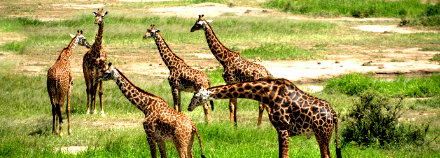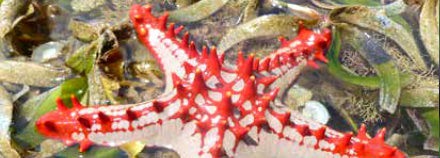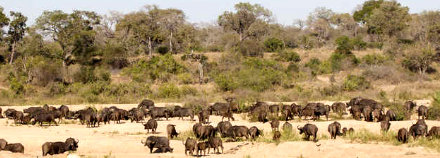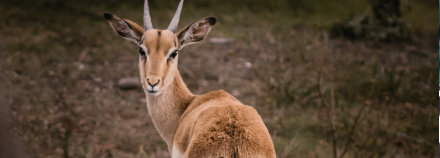
United Republic of
TANZANIA

Mafia Island
Best Time: July - OctoberClimate: 22 - 30 °c
Size: 394 sq. km.
Mafia island has an extraordinary history described partly in its remnant archaeology and Iron Age sites, annals of the many seafaring nations that came for trade or conquest to Azania, as the East Coast of Africa was known originally.
There is nature, especially the outstanding marine life that led to the creation of Mafia Island Marine Park, with its more than 460 species of fish and over 50 genera of coral. Mafia offers World-class diving and snorkelling for all levels of experience and training is offered by several dive centres.

Zanzibar Archipelago
Best Time: July - OctoberClimate: 21 - 31 °c
Size: 2,462 sq. km.
Zanzibar is the ultimate Indian Ocean experience, with its fascinating historical and magnificent islands. Zanzibar's Indian Ocean offers world class watersports including scuba diving, snorkeling, deep sea fishing, kayaking, windsurfing, waterskiing and sailing on traditional local dhows.
It is here that the Africa Culture blended with other cultures mainly Persian, Arabic and Indian to forms Swahili Culture. Today the romance, the splendor and legends of the past are still vibrantly alive, traditional sailing dhows, carved wooden and doors, chests, the scent of the clove and the smile of the hospitable people welcomes you to Zanzibar.

Gombe National Park
Best Time: July - OctoberClimate: 15 - 27 °c
Size: 52 sq. km.
Gombe National Park covers an area of 52 sq. km. and was first recognized as an important wildlife and chimpanzee habitat in 1943, when it was designated a Game Reserve. It has mountainous forested terrain that slopes steeply down to its sandy shoreline on Lake Tanganyika, and the defining attraction for the visitor are the chimpanzees living there.
In addition to the joys of walking in pristine forests and watching chimps, it is a rare treat to be able to sit down quietly in a corner of pristine forest and have chimpanzees romp, play and interact all around you as they go about their daily activities.

Ruaha National Park
Best Time: June - OctoberClimate: 16 - 27 °c
Size: 20,226 sq. km.
Ruaha National Park is vast, and was upgraded to a National Park in 1964 and was further enlarged in 2008 to its current size of 20,226 sq. km., making it Tanzania’s second largest National Park. This makes it about the size of New Jersey in the United States, or of the whole country of Wales in the UK!. In fact Ruaha is part of a much larger ecosystem of about 45,000 sq. km. Nature reigns supreme across this enormous area.
And what an area! Rivers, mountains, plains, rock kopjes, swamps, dense woodlands, open savannas spread out across an immense landscape that has barely been touched by man.

Mikumi National Park
Best Time: May - NovemberClimate: 16 - 27 °c
Size: 20,226 sq. km.
Mikumi was made a National Park in 1,964 and is 3,230 sq. km (1,250 sq. miles) in size. This enormous area links the Julius Nyerere National Park (formerly Selous) with the forested abundance of the eastern arc mountains, and so is an important part of a huge ecosystem of rivers, wood plains, forests and woodlands.
The northern plains that surround the Mkata River are readily accessible and is the best place to go for wildlife. A good network of tracks means that a wide variety of wildlife including buffalo, cape hunting dog, cheetah, and lion are approachable and can be enjoyed at close quarters.

Katavi National Park
Best Time: June - OctoberClimate: 17 - 31 °c
Size: 4,471 sq. km.
Katavi at 4,471 sq. km is large and protects only part of an even larger ecosystem. Extensive open plains alternate with broad-leafed woodlands, hat-topped acacia bush and wide swamps and lakes.
This is a highly seasonal place only accessible in the dry months from July to October. It is extremely remote, and this very remoteness is its strength for during the long wet season from October to May (8 months) the wild animals have free domain over a huge hinterland of several thousand square kilometers both within and outside the Park, virtually untouched by man.

Mahale Mountains National Park
Best Time: July - OctoberClimate: 14 - 27 °c
Size: 1,650 sq. km.
For those who enjoy remoteness, beautiful landscapes and wildlife Mahale Mountains National Park is surely one of the most spectacular places to visit in all of Africa. This is not idle sales talk. Some would argue that it is one of the most spectacular travel destinations in the whole world. Distance and cost notwithstanding, you owe it to yourself to somehow drum up the budget to get there at least once in a lifetime!
Chimpanzees may be the main draw, but they are by no means the whole picture. Pristine forested mountains tower up behind intimate sandy beaches and bays and rocky promontories of the eastern shores of Lake Tanganyika.

Tarangire National Park
Best Time: July - NovemberClimate: 14 - 26 °c
Size: 2,850 sq. km.
The National Park is 2,850 square kilometers in area and was gazetted in 1970. It is only a small part of a much larger ecosystem of some 30,000 sq. km that comprises most of what is called the Maasai Steppe or southern Maasailand.
From the wide-open plains in the north, south along the Acacia and baobab studded ridges and valleys of the Tarangire River, and across vast seasonal swamps, wildlife gathers in large numbers. This is the dry season refuge for an enormous swathe of southern Maasailand, and between July and November the wildlife here is extraordinary by any standards Africa-wide.

Lake Manyara National Park
Best Time: June - OctoberClimate: 14 - 24 °c
Size: 325 sq. km.
Lake Manyara National Park lies in a very dramatic setting up against the steep western wall of the Rift Valley. Being directly en route to Ngorongoro from Arusha or Tarangire, it is a poplar place either for a day visit or for longer. However, it is an exceptional National Park that would deserve a visit regardless of where it was located; in fact so exceptional that it was declared part of a World Biosphere Reserve in 1981.
There are at least 5 very different habitats existing side by side in an area of 325 sq. km. In fact on a game drive you see more variation in the distance travelled than anywhere else in Africa.

Arusha National Park
Best Time: June - OctoberClimate: 8 - 26 °c
Size: 137 sq. km.
This beautiful Park has often been called a little gem and rightly so. It is only 1⁄2 an hour by tarmac road from Arusha town, the safari center of northern Tanzania. With mountains, valleys, lakes, and small plains clothed in green, it has a wonderful feeling of peace and solitude. It is dominated by Mount Meru, which at 4,566 m (14,980 ft) is the 3rd highest free standing mountain in Africa.
At the bottom end of the Park is another small, but complete, volcanic crater called Ngurdoto, which has recently been opened to guided hikes. It is a secret paradise, with a lake on one side and elsewhere clothed in virgin forest and a network of open grassy glades. A track follows the rim with look-out points established where one can relax with a picnic and look down into this secret world of swamps and plains and spot buffalo, warthog and occasional elephant enjoying its tranquility.

Kilimanjaro National Park
Best Time: July - AugustClimate: -4 - -20 °c
Height: 5,895 m.
Size: 1,688 sq. km.
Mount Kilimanjaro is Africa’s highest mountain (5,895 meters). To be in its presence either near or far, and to see the grandeur of its giant dome tower so far, far up into the sky above the surrounding plains is one of life’s great travel experiences. You can but gaze at it in wonder and awe and feel deeply humbled by the sheer magni cence of it. No wonder so many travelers want to get there, be there, embrace it, climb it.
There is a possibility of seeing wildlife while climbing Kilimanjaro, as there is a lot of it in the forests and moorlands including, elephant, buffalo, leopard, warthog, bush pig, waterbuck, bushbuck, several species of monkey, and lots of birds. There is a chance of seeing some or all of these on the hike up the lower and upper slopes.

Rubondo Island National Park
Best Time: June - OctoberClimate: 12 - 26 °c
Size: 237 sq. km.
Rubondo is a tropical island near the western shores of Lake Victoria and is about as pristine a place as it is possible to find. There has been no human habitation on the island for decades, and it is covered by primary tropical forest, interspersed with small patches of savannah and swamp.
The main island and 9 other smaller ones were grouped into Rubondo National Park in 1977. Boating along the rocky shore line is one of the key activities to enjoy. Clean sandy beaches overhung with huge forest trees fringe the bays, and there is a large piece of papyrus swamp on one side which is a magnificent water bird habitat.

Serengeti National Park
Best Time: June - FebruaryClimate: 15 - 25 °c
Size: 14,763 sq. km.
Parts of the present Park were made into a National park in 1952. The boundaries were then changed and enlarged in 1959 to 14,763 sq. km. It is part of a coherent ecosystem some 35,000 sq. km in size. The Serengeti is now both a World Biosphere Reserve and a World Heritage Site.
The Serengeti is world famous and with good reason. Not only is the migration of over 1 million wildebeest and other plains game through its plains and woodlands the most spectacular wildlife event on earth, but it abounds with other wildlife superlatives. The Serengeti is home to the world’s largest populations of wildebeest, zebra, Cape eland, lion, cheetah, hyena, gazelle (both Thompson’s and Grant’s), and no doubt much more. And on top of this it is scenically beautiful and has a wonderful sunny climate of cool nights and warm days.

Burigi-Chato National Park
Best Time: June - SeptemberClimate: 15 - 25 °c
Size: 4,707 sq. km.
Gazetted as a National Park in 2019 Burigi Chato covers 4,707 sq. km making it the 4th largest National Park in Tanzania.
Stretching from Lake Victoria in the East to the Rwandan boundary in the West Burigi Chato is an enormous piece of wilderness, encompassing fresh water lakes, long hills, rocky crags along escarpments, deeply set valleys lined with forest, open plains, swamps, rivers, wood plains and hundreds of square kilometres of medium and tall grass wooded savanna - mostly Combretum and Terminalia known as Miombo.br />
A key attraction in this National Park are the lakes with Lake Burigi being the 3rd largest lake in the country. It is a long lake with a number of islands, inlets and bays along its length, some of which are swampy and are home for the rare sitatunga antelope, and possibly also the even rarer shoebill stork.

Ugalla River National Park
Best Time: June - OctoberClimate: 16 - 28 °c
Size: 5,000 sq. km.
The Ugalla River in west-central Tanzania is a broad, slow moving river of sand banks, shallow pools, oxbow lakes and swamps that winds its way in meandering loops westwards through a remote and almost forgotten world of extraordinary wildlife richness. It became a National park in 2019. It is just under 5000 sq. km in area.
There is nature, especially the outstanding marine life that led to the creation of Mafia Island Marine Park, with its more than 460 species of fish and over 50 genera of coral. Mafia offers World-class diving and snorkelling for all levels of experience and training is offered by several dive centres.

Udzungwa National Park
Best Time: June - OctoberClimate: 18 - 27 °c
Size: 1,990 sq. km.
In a broad arc running 500 miles down the eastern side of Tanzania are seven ancient mountain ranges. This Eastern Arc, as it is known, is the first barrier in East Africa to the moist trade winds of the Indian Ocean. From the rising air fall torrents of warm rain in thunderous storms and lightning displays, and endless weeks of mist and cloud. This has been a pattern for tens of millions of years, creating the oldest rain forests in Africa and amongst the oldest in the world.
These forested islands are surrounded by seas of drier savannas, and their isolation has led to the evolution of the most unique and varied plant and animal life in all of Africa. The fascinating thing about them is how unexplored they are. A completely new species of monkey, the Sanje mangabey was discovered as recently as 1979, and a new species of francolin (partridge family) was rst discovered by scientists in 1992 – the Udzungwa Forest Francolin.

Nyerere National Park
Best Time: June - NovemberClimate: 19 - 28 °c
Size: 30,893 sq. km.
The Nyerere National Park, formerly part of The Selous Game Reserve is enormous, wild and remote. And it has great wildlife - big game, cape hunting dogs, sable, roan, greater and lesser kudu, raptors, ostrich, crocs, hippos etc. But the main point is that this wildlife can be enjoyed in such a variety of interesting habitats within this fabulous place. Most places that are currently accessible have a lot of small informal tracks. This makes it much easier to get reasonably close to the animals you want to enjoy, and there is no sign that this is having a negative impact.
This factor of the many small game viewing tracks is important (and unlike some other National Parks in East Africa) because many a safari visitor has come on safari hoping to witness what they have viewed on TV or social media, not understanding that much of what they view has been filmed by people with off-track privileges. In the Nyerere National Park it is possible to get within a reasonable but respectful distance of wildlife.

Saadani National Park
Best Time: June - NovemberClimate: 21 - 31 °c
Size: 1,062 sq. km.
Saadani is the only National Park in East Africa where you can be enjoying wildlife at one moment, including big game species such as elephant, buffalo, lion, giraffe, roan etc. and then the next be walking along a sandy beach and swimming in the surf of the Indian Ocean.
There are about 8 km of sea front and of these at least 3 km are unspoilt beaches. The undisturbed nature of the beaches makes it a favourite place for green turtles to lay their eggs and this beach is the most important breeding site for turtles in all of Tanzania.
The terrain is mostly at but with a wide variety of vegetation types, including broad leafed woodlands (Miombo), extensive areas of open plains with scattered trees, dense riparian vegetation and mangroves. There are palm trees along parts of the coastal beaches.

Kigosi National Park
Best Time: June - OctoberClimate: 15 - 26 °c
Size: 8,268 sq. km.
Kigosi was established a National Park in 2019. It is 8,265 sq. km. in area and is part of the Moyowosi / Malagarasi wetlands complex, which is the largest in East Africa.
In fact it is part of a vast shallow basin drained by 7 slow moving rivers, the Malagarasi, Moyowosi, Nikonga, Ugalla, Kigosi, Nikonga and Gombe (not to be confused with Gombe Stream where the chimps live) that wind sinuous paths through an immense and complicated network of swamps, plains lakes and woodlands. These rivers eventually join up into the Malagarasi River which empties into Lake Tanganyika at Ilagala. The whole system is more than 92,000 sq. km.in area which makes it larger than the whole of Portugal! It has been estimated that it supplies almost 30% of Lake Tanganyika’s fresh water.

Rumanyika-Karagwe National Park
Best Time: June - OctoberClimate: 15 - 25 °c
Size: 247 sq. km.
Rumanyika-Karagwe was gazetted as a National Park in 2019. It covers an area of 247 sq km. and is a wild and beautiful area with great opportunities for photographic tourism. It has a temperate climate but with considerable temperature variation depending on elevation.
The essential core of the area is quite a deep valley with a slow winding river at its base which breaks up into lakes and swamps. The lower slopes of the valley are a mosaic of tall grass savanna and forested patches and thick bush. The higher slopes of many of the hills have montane forest. The Acacia tall grass woodlands are spacious and attractive and are kept relatively open by managed seasonal fires.

Ibanda-Kyerwa National Park
Best Time: June - OctoberClimate: 18 - 25 °c
Size: 200 sq. km.
The Park was gazetted in July 2019 having been a Game Reserve that was first established in 1972. The Park is located in the north west of Tanzania where it borders Rwanda to the west and shares a short boundary with Akagera National Park. The actual Park boundary is the Kagera River. To the north the Park shares a boundary with Uganda where again the actual boundary is the Kagera River.
Open Acacia savannahs, with some of them medium grass are characteristic of this remote and beautiful corner of Tanzania, a line of rolling hills and valleys to the west and south border a central basin with low hills and plains dissected by seasonal rivers and with scattered lakes and swamps.

Mkomazi National Park
Best Time: June - OctoberClimate: 16 - 27 °c
Size: 3,230 sq. km.
Mkomazi is located in the north east of Tanzania where it shares a boundary with Tsavo National Park. It was established as a National Park in 2006. It is 3,230 sq km in area. It is a place to enjoy wildlife in remote, wild, thorn bush country with open plains in places. The scenery is magni cent. Enormous baobabs dot the landscape and there are distant vistas with mountains near and far on its borders. Mount Kilimanjaro is easily visible from all parts of the Park.
Being far from the more visited safari circuits you are likely to be watching wildlife there by yourself, unhurried and with time to soak up the ambience of wild Africa.

Rungwa Game Reserve
Best Time: July - NovemberClimate: 16 - 27 °c
Size: 9,000 sq. km.
Rungwa Game Reserve was established in 1951. This site is 9,000 sq. km. (3,500 sq mi). The ecosystem it protects extends to Ruaha National Park which is the second largest wildlife area in Tanzania.
The reserve is composed of hills mixed with patches of forest along the streams and the Mpera River valley, which provides water in the dry season and becomes the best game viewing areas from July to November. It covers a large part of Central and West Tanzania and primarily covered with Miombo woodlands giving visitors access to excellent thicket is a unique vegetation type found only in two places in Africa. One is on the northern fringes of the Muhesi GR and this may be the only place where it is protected.

Maswa Game Reserve
Best Time: June - OctoberClimate: 15 - 25 °c
Size: 2,200 sq. km.
Maswa is an extraordinarily beautiful area. There are wide open plains along the Southern edge of the Serengeti. Rolling hills covered in thickets and rock kopjes are interspersed with seasonally dry rivers containing permanent water holes. Maswa has plenty and varied wildlife including big game with a high density of lion and leopard.
Originally a hunting concession, the reserve has now been converted into a multi-use area. The safari operator in this area has since the 1980’s, done an exceptional job keeping poachers away and animal numbers have increased dramatically. Maswa is one of the most important buffer zones separating villages to the West from Serengeti National Park.

Uwanda Game Reserve
Best Time: June - OctoberClimate: 20 - 32 °c
Size: 4,100 sq. km.
Uwanda Game Reserve also known as Uwanda Rukwa Game Reserve is a reserve of the Rukwa Valley of southwestern Tanzania. It is an extension of Katavi National Park and covers an area of 4,100 sq. km. It includes almost half of Lake Rukwa.
Uwanda game reserve was established in 1974 and Lake Rukwa is majorly known for highest population of crocodiles. Uwanda is also a breeding place for red locusts which attract many birds.

Ngorongoro Conservation Area
Best Time: All Year RoundClimate: 6 - 23 °c
Size: 8,292 sq. km.
Once a gigantic volcano, the Ngorongoro Crater in northern Tanzania is now the largest intact caldera in the world. Some maintain that, before it erupted, it would have been higher than Mount Kilimanjaro, the highest peak in Africa. Today, long since having collapsed and eroded, it is an extensive highland area with the famous 600 m (2,000 ft) deep crater as its focal point.
Nearly three million years old, the ancient caldera shelters one of the most beautiful wildlife havens on earth. An estimated 25 000 large mammals are resident in this bowl of plenty.









